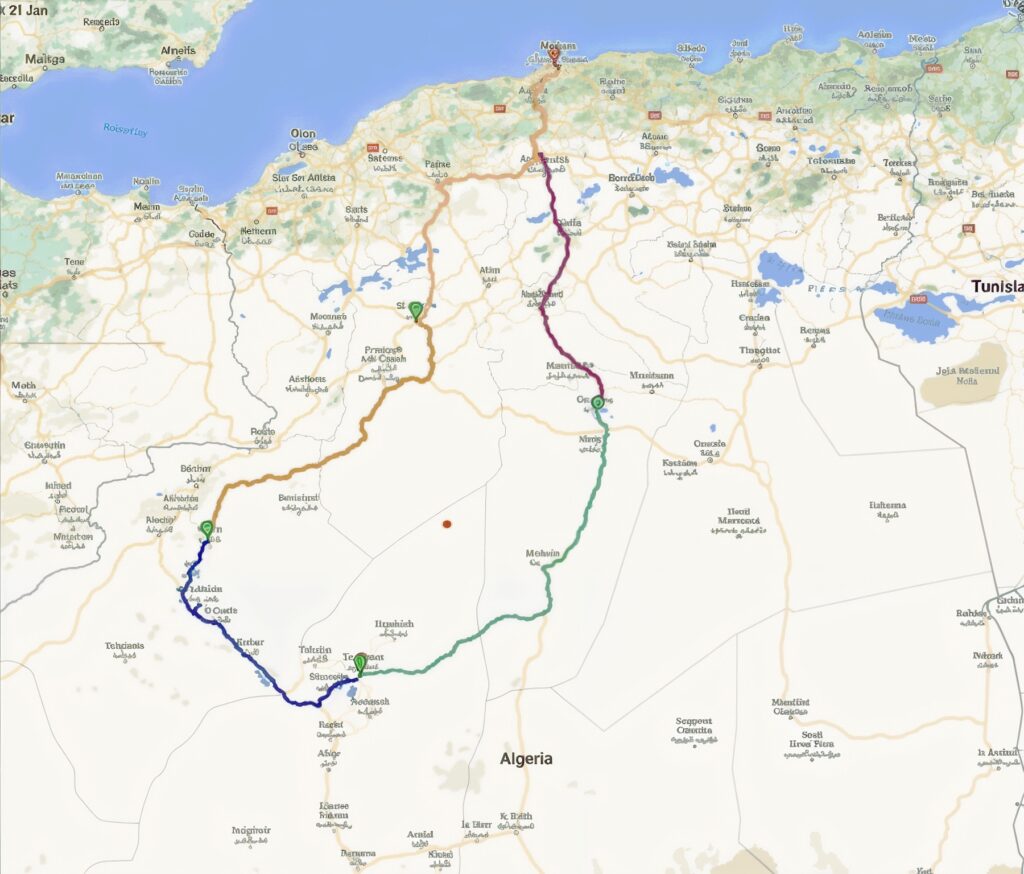
Algeria Travel Guide – Undiscovered Pearl of North Africa
You may ask why I wanted to travel to Algeria. Because I’m a big fan of searching for cheap flight tickets on the Internet, I think the answer is obvious. One day, cheap flights to Algeria appeared online. I just wandered into a travel blog forum, where I came across a bunch of guys who were looking for a fourth for their team for their journey. I didn’t hesitate long before joining them. Later that day we bought tickets. Some new stories had just emerged in the newspapers – the kidnapping of a Czech man in Libya and the executions of captives in Syria. Everyone around me told me I was a madman and that they would see me on TV in an orange jumpsuit. Even the State Department discouraged from taking any trips to Algeria. In this Algeria Travel Guide, you will learn how to plan the trip and what places to visit in Algeria including tips with an itinerary.
Before Travelling To Algeria - What to do?
Algeria is the largest country in Africa, situated in the north of the continent. Four fifths of the country are covered by the Sahara Desert. The country boasts beautiful beaches, mosques and Roman monuments. Algeria is still undiscovered by mass tourism – which was the main draw for me
When I started preparing for the journey, I encountered the first problem. This was, surprisingly, the language barrier. Most information was available only in French or Arabic. I had to go through a crash course in French with Google Translate, then I was able to rent a car.
To obtain visas, it was necessary, in addition to the obligatory form-filling and photographs, to provide a personal invitation or hotel booking. It is ideal to give a full travel itinerary to the embassy.
So, we decided to provide as much information as possible. Here, I ran into another problem – almost no hotels can be booked online. That gave me plenty of difficulty because I had to adjust our itinerary to be suitable for presentation at the embassy. I made bookings for a few hotels and cancelled these reservations later, since we wanted to look for accommodation on the spot according to our actual situation. When I finally had all these documents together, including the fee of the Visa , I gave it to the embassy. The lady at the counter was a little surprised that I wanted a tourist visa nearly two months before departure, because it was apparently plenty of time to process. Although my application was complete and correct, I really had to wait for a visa. Finally I got the visa after waiting for some time.
Key Destinations
Algiers:
The capital city, Algiers, is known for its contrasting architecture: French colonial buildings alongside traditional Islamic structures. The Casbah of Algiers, a UNESCO World Heritage Site, is a maze of narrow alleys, mosques, and historical homes. Don’t miss landmarks like the Martyrs’ Memorial and Notre Dame d’Afrique, which offer stunning views of the Mediterranean.Tassili n’Ajjer:
This UNESCO-listed plateau in the Sahara Desert is renowned for its prehistoric rock art, showcasing thousands of engravings that depict early human life. The unique sandstone formations and vast dunes make it a must-visit for nature lovers.Timgad and Djemila :
- Timgad: Known as the “Pompeii of Africa,” Timgad is an exceptionally preserved Roman city with colonnaded streets, a theater, and temples.
- Djemila: Another UNESCO site, its ruins reflect the grandeur of Roman urban planning amid scenic mountain surroundings.
Oran:
A vibrant city on the western coast, Oran combines cultural heritage with a dynamic atmosphere. Explore the Santa Cruz Basilica, historic forts, and lively music festivals rooted in the Rai music tradition.Ghardaïa:
Located in the M’Zab Valley, this region showcases stunning desert architecture and a strong Berber culture. The city is part of a UNESCO World Heritage site and is known for its unique houses and traditional markets.Constantine:
Famous for its dramatic cliffs and suspension bridges, Constantine offers breathtaking views and historic sites like the Palace of Ahmed Bey and the Cirta Museum.Tlemcen
- A city of Moorish architecture and culture, featuring the Great Mosque, Mansourah ruins, and lush surroundings.
Unique Experiences
- Desert Safaris: Traverse the vast Sahara on a camel trek or 4×4 excursion. Experience the shifting sands of the Erg Chebbi dunes and camp under a star-studded sky.
- Cultural Immersion: Participate in local festivals such as the Berber New Year (Yennayer) or the Cherry Festival in Tlemcen. Enjoy Algerian hospitality and savor traditional dishes like couscous, rechta, and harira.
- Historic Exploration: Discover ancient Roman cities like Djemila and Tipaza, or visit Ottoman-inspired mosques in Tlemcen.
Practical Travel Tips
Best Time to Visit:
Spring (March–May) and autumn (September–November) are ideal, with moderate temperatures for desert exploration and city tours.Getting Around:
- Domestic flights connect major cities quickly.
- Trains and buses are affordable for regional travel.
- Taxis and car rentals are popular for urban areas and rural excursions.
Language:
Arabic and Berber are official languages. French is widely spoken, making communication easier for visitors familiar with it.Cultural Etiquette:
Algeria is a conservative country. Dress modestly, especially in rural and traditional areas. Respect local customs and religious practices.
Cuisine and Hospitality
- Food Highlights: Couscous is the national dish, often served with lamb, chicken, or vegetables. Makroud (date-filled pastries) and harira (a hearty soup) are culinary delights you must try.
- Hospitality: Algerians are known for their warm hospitality. Guests are often offered mint tea or coffee, accompanied by sweets, as a sign of welcome.
Why Visit Algeria?
- A perfect blend of history, culture, and natural beauty awaits. Explore untouched Saharan landscapes, marvel at Roman ruins, and immerse yourself in a unique mix of Mediterranean and North African traditions.
